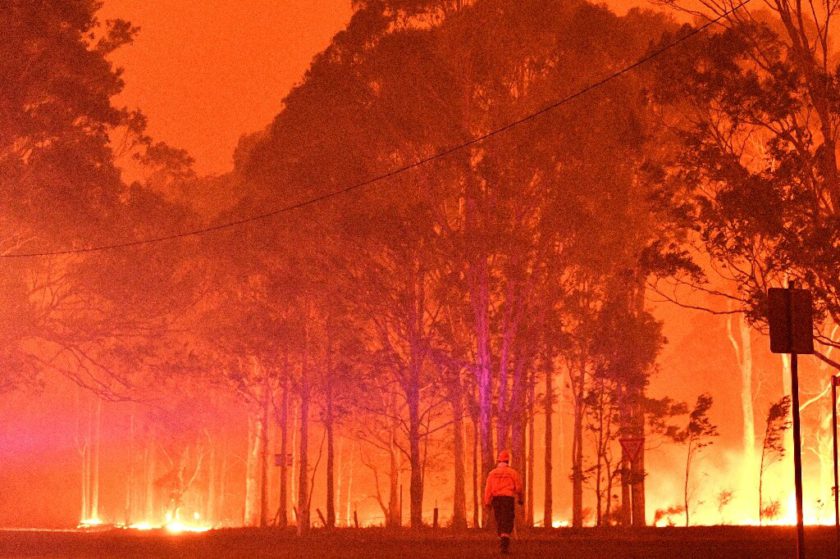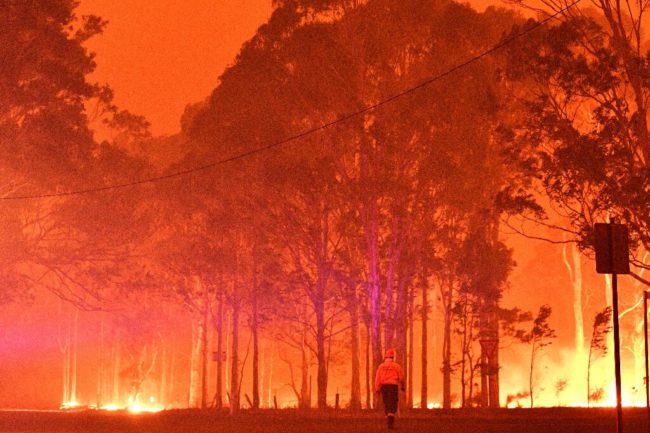
We have very precise records for each and every month going back as far as 1880. The officially published NOAA stance regarding January 2020 is this …
The globally averaged temperature departure from average over land and ocean surfaces for January 2020 was the highest for the month of January in the 141-year NOAA global temperature dataset record, which dates back to 1880.
Quite independent from NOAA is the data collected by the EU’s Copernicus Climate Change Service (C3S). Their position is exactly the same …
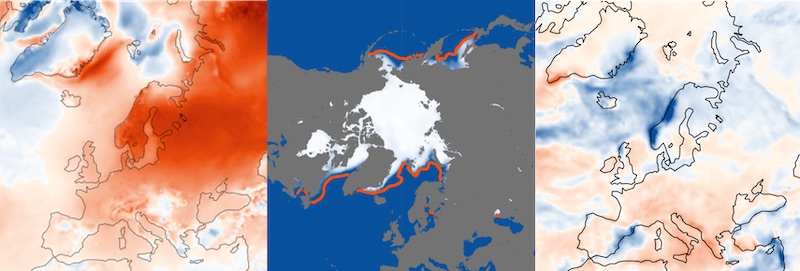 January 2020 temperature, hydrological, and sea ice highlights:
January 2020 temperature, hydrological, and sea ice highlights:
-
- The global temperature was warmer than any previous January in the data record, but only marginally so (by 0.03C) in the case of January 2016.
- For Europe, last month was the warmest January in this record, about 0.2ºC warmer than than the previous warmest from 2007. It was 3.1°C warmer than the average in the period 1981-2010, with some areas more than 6°C above the 1981-2010 average.
- Europe was generally drier than average, with notable exceptions in Norway and the region from northeastern Spain into southern France.
- In the extra-tropical Southern Hemisphere, a number of countries experienced much above average rainfall, including western Australia, Madagascar and Mozambique
- Both the Arctic and Antarctica saw below average sea ice cover compared to the 1981-2010 average
The warming Arctic and Antarctic
The canary in the coal mine is the rapidly warming Arctic and Antarctic. There have been a few measurements that have shocked those familiar with what is normal.
65 Degrees in Antarctica
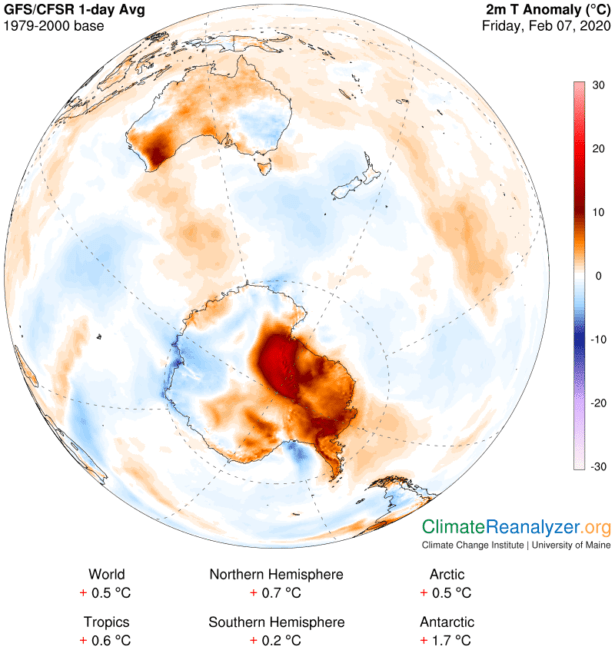
On 6th February a reading of 65 degrees was taken at Esperanza Base along Antarctica’s Trinity Peninsula. This was the ordinarily frigid continent’s highest measured temperature in history. The Washington Post has the details …
The balmy reading beats out the previous record of 63.5 degrees, which occurred March 24, 2015.
The Antarctic Peninsula, on which Thursday’s anomaly was recorded, is one of the fastest-warming regions in the world. In just the past 50 years, temperatures have surged a staggering 5 degrees in response to Earth’s swiftly warming climate. Around 87 percent of glaciers along the peninsula’s west coast have retreated in that time, the majority doing so at an accelerated pace since 2008.
Almost 70 Degrees in Antarctica
Now too long after the above, this happened. It shattered the above record …
A weather research station on Seymour Island in the Antarctic Peninsula registered a temperature of 69.3 degrees (20.75 Celsius) on Feb. 9, according to Márcio Rocha Francelino, a professor at the Federal University of Vicosa in Brazil.
That last one has yet to be fully confirmed and verified.
A bit more detail on January 2020
January Temperature
Below is the NOAA Global Temperature summary.
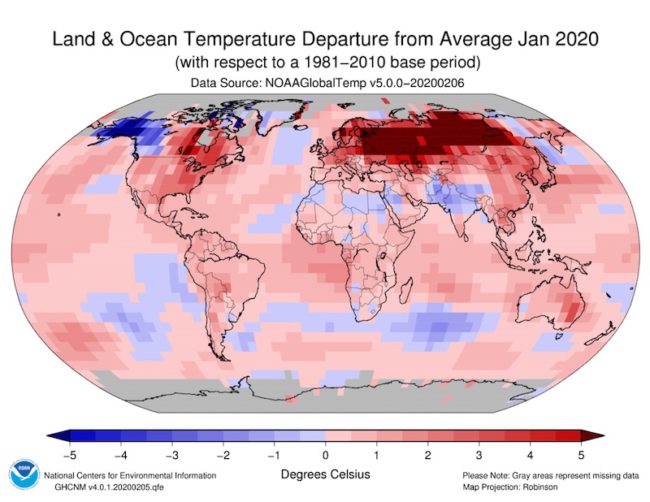
- January 2020 marked the 44th consecutive January and the 421st consecutive month with temperatures, at least nominally, above the 20th century average.
- January 2016 and 2020 were the only Januaries with a global land and ocean surface temperature departure from average above 1.8°F (1.0°C). The four warmest Januaries have occurred since 2016; while the 10 warmest Januaries have all occurred since 2002.
- The global land and ocean surface temperature departure from average was the highest monthly temperature departure without an El Niño present in the tropical Pacific Ocean. March 2017, December 2019, and February 2017 were the other months where the global land and ocean surface temperature was above 1.8°F (1.0°C) without an El Niño present in the tropical Pacific Ocean.
- The Northern Hemisphere also had its warmest January on record. It was a combined land and ocean surface temperature departure from average of 2.70°F (1.50°C). This value bested the now second warmest January set in 2016 by 0.22°F (0.12°C).
- The Southern Hemisphere’s land and ocean surface temperature departure from average was 1.40°F (0.78°C) above average. That makes it the second warmest January on record. Only January 2016 was warmer.
Notable observations
- The most notable warmer-than-average land temperatures were present across much of Russia and parts of Scandinavia and eastern Canada, where temperatures were 9.0°F (5.0°C) above average or higher. The most notable cool temperature departures from average during January were observed across much of Alaska and parts of western Canada, with temperatures 7.2°F (4.0°C) below average or less.
- Record-warm January surface temperatures were present across parts of Scandinavia, Asia, the Indian Ocean, the central and western Pacific Ocean, the Atlantic Ocean and Central and South America. No land or ocean areas had record-cold January temperatures.
- South America, Europe, Asia and the Caribbean and Hawaiian regions had their second warmest January since regional records began in 1910, while Oceania had its third warmest January on record.
- According to a statistical analysis done by NCEI scientists, the year 2020 is very likely to rank among the five warmest years on record.
Snow and Ice
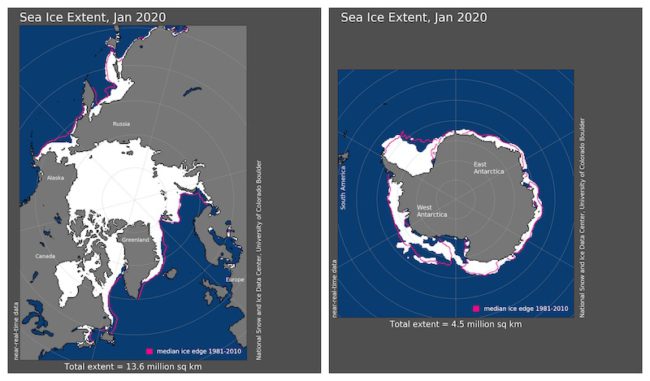
- The January average Arctic sea ice extent of 5.27 million square miles was 297,000 square miles (5.3 percent) below the 1981–2010 average. This is tying with 2014 as the eighth smallest January extent in the 42-year record, according to analysis by the National Snow and Ice Data Center using data from NOAA and NASA. Baffin Bay had the smallest sea ice extent since January 2011, while the Barents Sea had the largest sea ice extent since January 2015.
- Antarctic sea ice extent during January was 1.74 million square miles, which is 190,000 square miles (9.8 percent) below the 1981–2010 average. This value tied with January 2011 as the 10th smallest January sea ice extent on record.
- According to data from NOAA and analyzed by the Rutgers Global Snow Lab, the Northern Hemisphere snow cover extent during January was 190,000 square miles below the 1981–2010 average and the 18th smallest January snow cover extent in the 54-year period of record. The North American snow cover extent was near average, while Eurasia had a slightly below-average extent for the month.
Data Access
You can of course continue to dill down further and further into the details.
The next step down from the NOAA summary is the complete NOAA Global report (via here). From there you can continue to drill further down into the actual datasets.
With the Copernicus Climate Change Service (C3S) it is a similar story. You can also access their raw data. They even give you step by step instructions on how to install the python libraries for their API. They have rather a lot of datasets that you can explore.
One last Observation
Key Highlight. We just had the warmest January every recorded.
Some might assert that I’m expressing a political opinion by reporting the above.
The rather stark reality is that thermometers do not vote, nor do they swing politically left or right. They simply record what is.
January 2020 – Further Reading
- NOAA (13th Feb 2020) – Assessing the Global Climate in January 2020
- Copernicus Climate Change Service – Monthly Bulletins
- Washington Post …
- 7th Jan – Antarctica just hit 65 degrees, its warmest temperature ever recorded
- 14th Feb – Temperature in Antarctica soars to near 70 degrees, appearing to topple continental record set days earlier
